Some people just love the outdoors. But Julia Butterfly Hill took that love to the next level by living not just inside a redwood forest in California but right on top of one of the trees–200 feet above the ground.
Of course, Julia had to learn a ton of new skills to survive this unique lifestyle. But the reason why she was doing it made it all worth it.
Fighting against giants
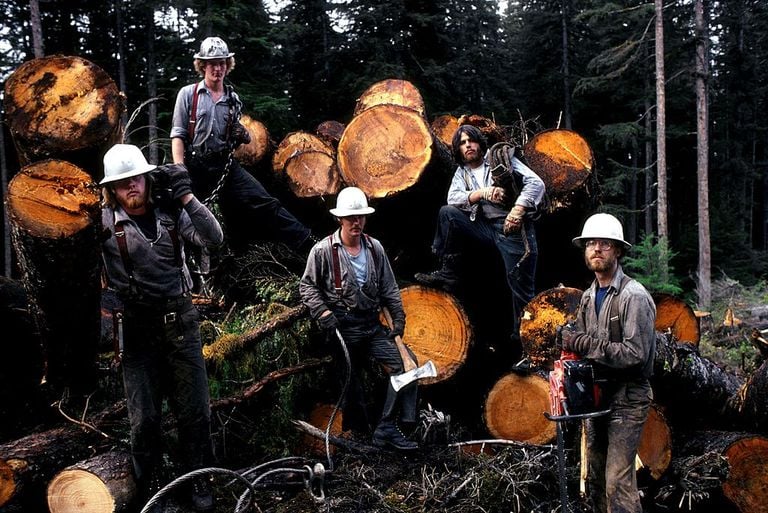
Deforestation was rampant back in the 90s, which was the reason why Julia decided to fight against loggers by living in the heart of the forest. She chose Luna, a 1000-year-old redwood tree, to be her home for two years.
Understandably, the battle was not easy. She was fighting against big corporations behind these loggers, which made the battle all the more dangerous for her. She was intimidated not only by efforts on the ground but from the air above her. But she refused to be bullied.
Life in the treetops
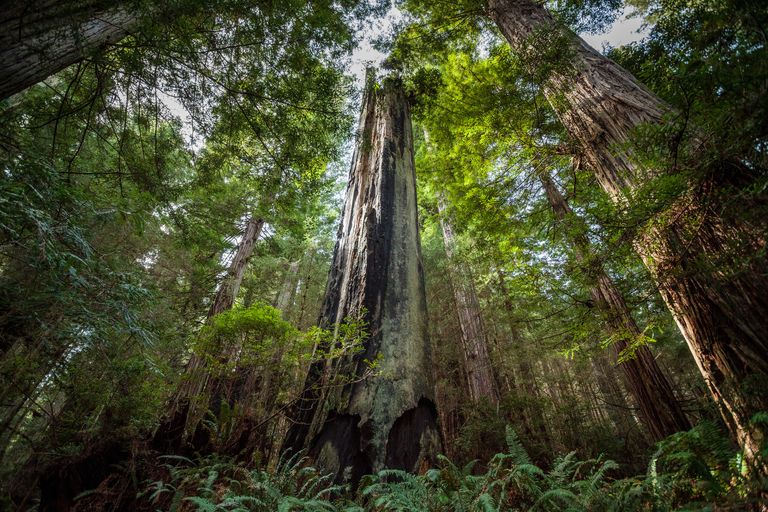
Living on top of a tree is not exactly the safest way to live. One wrong move and Julia could plummet down to earth, not just ending in injury but possibly in loss of life. She was also exposed to a harsh environment–over which she had very little control.
But she understood the risks and created an entire lifestyle that allowed her to survive despite the risks. Her passion for her advocacy also pushed her to go on despite the odds.
Finding her way

The interesting thing about Julia’s lifestyle was that she didn’t just live to survive–she was actually thriving despite the challenges. In fact, she remained connected to the world from atop her treehouse!
Using solar power, she was still able to do interviews and continued to speak on cable TV to get more people interested in her cause. Because of this amazing effort, Luna, the tree she lived in and fought so hard to protect, still stands to this very day.
Moving around

You wouldn’t think Julia would grow up to love nature this much. But her second name, Butterfly, has an interesting history.
Julia was born in Missouri in 1974 to a family who moved around a lot. Her father was a minister, so they lived in a camper to make traveling from church to church easier. She was seven years old when a butterfly suddenly decided to land on her, which made her parents think it was the perfect nickname.
A near-death experience

Julia’s family eventually decided to settle down in Jonesboro, Arkansas. This is where Julia graduated from high school and started to work as a waitress. There wasn’t any sign that she’d be living in trees anytime soon, though.
Julia also worked hard, so it wasn’t surprising when she eventually became the restaurant manager. Things were looking up for her career-wise, but her life took a sudden turn when she almost died in a car accident in 1996 when she was 22 years old.
A new lease on life

A drunk driver hit the car that Julia was driving. The accident left her with a serious brain injury that required her to learn how to walk and talk again over the next few months.
The accident awakened a fire within Julia. She was given a new lease on life and knew she had to do better this time. She felt that she had to find her real purpose in life. She realized that there was so much more she could do.
Finding her purpose
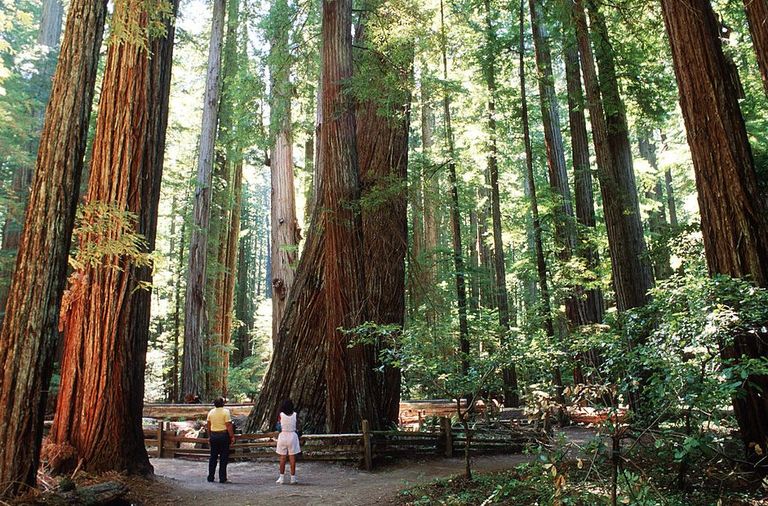
In her search for her true purpose, she found out about an ongoing rift between environmental activists and the Pacific Lumber Company. The logging company was cutting trees and clearing off parcels of land in Humboldt County in California.
The land they were clearing was filled with majestic trees that were there even before the locals were born. But the loggers didn’t care how old those trees were and what kind of contribution they gave to the community around them.
The truth about clear-cutting

Those who support the method that the logging company used–known as clear-cutting–said that this was the most economical way of doing things. They also believed that this was the safest method.
But environmental experts knew better. Clearing huge parcels of land at a time means that the creatures in the area would have nowhere to go. It also has a bigger impact on climate change. So the loggers might find it more profitable, but its environmental costs are too high.
Fighting against time
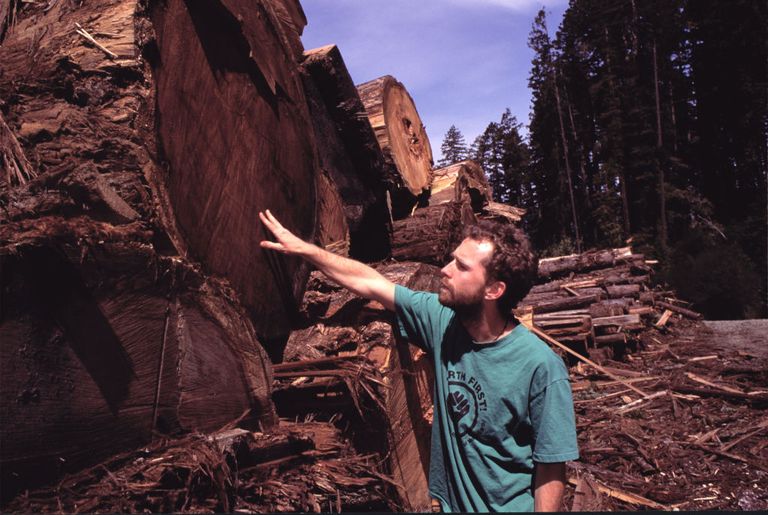
A few brave souls from within Pacific Lumber came out as whistleblowers, but one by one, they were silenced. Because of this, people continued seeing clear-cutting as an acceptable way of doing business.
That’s why loggers still stood their ground and prepared to cut the majestic redwoods, some of them aged almost 1000 years old. The people fighting for the environment desperately needed to find a way to stop them before they started destroying precious parts of the redwood forest.
Finding the best ways to protest

Julia decided that this must be her calling. So she attended a fundraising event and met some activists who said they temporarily found a way to keep the loggers at bay.
The activists built platforms on the trees where they stood and protested. Although this was effective, Julia knew that this was not only dangerous but also time and energy-consuming for everyone involved. They had to find a better way of protesting effectively; otherwise, they would run out of volunteers.
A willing volunteer
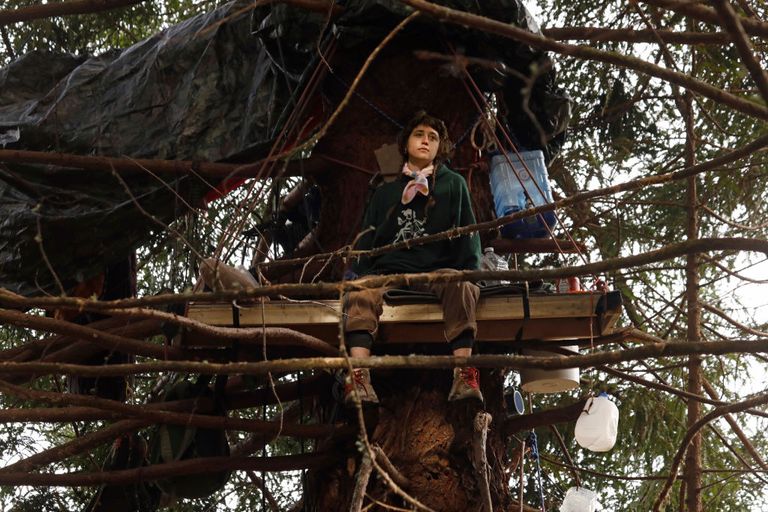
Julia arrived at the area where the protesters were “tree sitting” just in time. They were looking for a volunteer who would stay in the trees the entire week. Julia knew this was her chance to make a difference, so she readily volunteered.
Some of the activists weren’t sure if Julia could pull it off, though. After all, she was new to this. But Julia was insistent, and the group knew they didn’t really have anybody else to send up to the canopy that was built into the tree.
Camping out
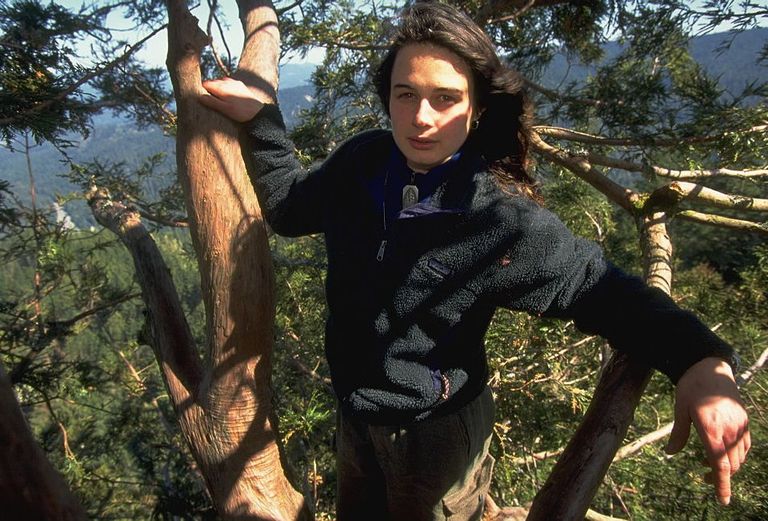
A lot of people weren’t too keen on spending an entire week in the middle of the forest either, so nobody else was willing to take the spot. This left them with no choice but to let Julia take the spot.
It was December 10, 1997, when Julia climbed up Luna, the 1000-year-old tree where the makeshift canopy had been built. Julia started to make herself comfortable and looked forward to the entire week ahead. Little did she know that this marked the start of her legacy.
Settling down

The group had already hoisted up the provisions Julia would need throughout the week. It was around midnight when Julia was attached to the harness that was going to take her to the canopy near the top of the tree.
Because the tree was unbelievably high, it took some time before Julia finally reached the platform. Once she got there, she was already tired and just wanted to get some rest. So she removed the harness and started to settle down.
A two-year adventure
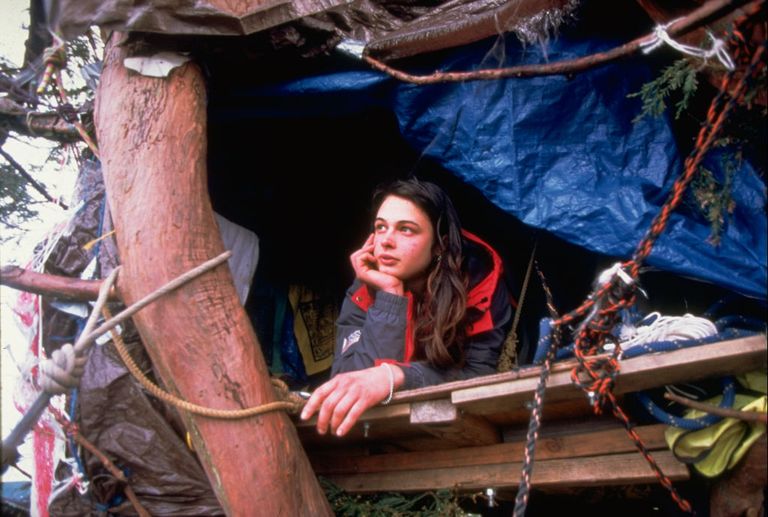
The moment Julia got up there, she realized that she could actually pull off living there not just for an entire week but for far longer. So this became the start of her 738-day stay on top of Luna.
Eventually, news of Julia’s efforts started to spread, and she gained the full support of a group called Earth First. They were in awe of Julia’s stay on that 6×4-foot platform and regularly sent help to Julia’s tree home, found 180 feet from the ground.
Connecting with the world
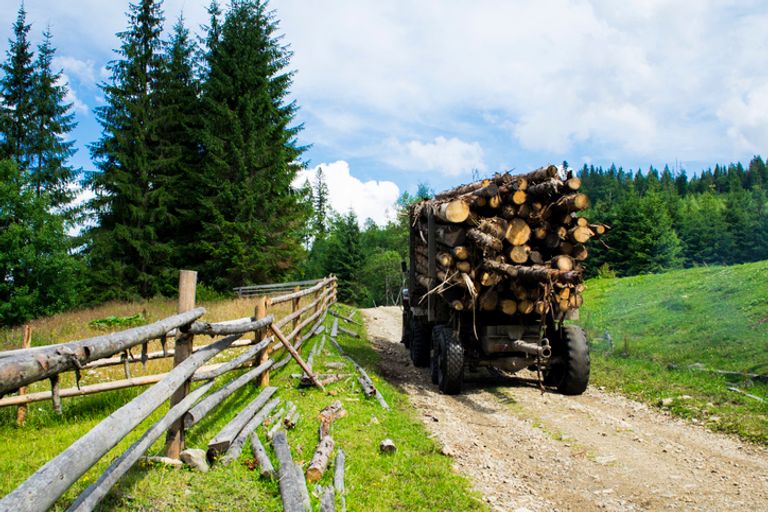
Julia’s resourcefulness became even more apparent the longer she stayed up the tree. The other activists would regularly send a fresh batch of supplies to her, and she prepared her own meals using a small portable stove.
What was amazing was the fact that she still found a way to connect with the outside world and make media appearances. She accepted invitations for interviews and was bravely speaking up about how Pacific Lumber’s logging had been affecting the community and the natural flora and fauna around Humboldt County.
Braving the elements
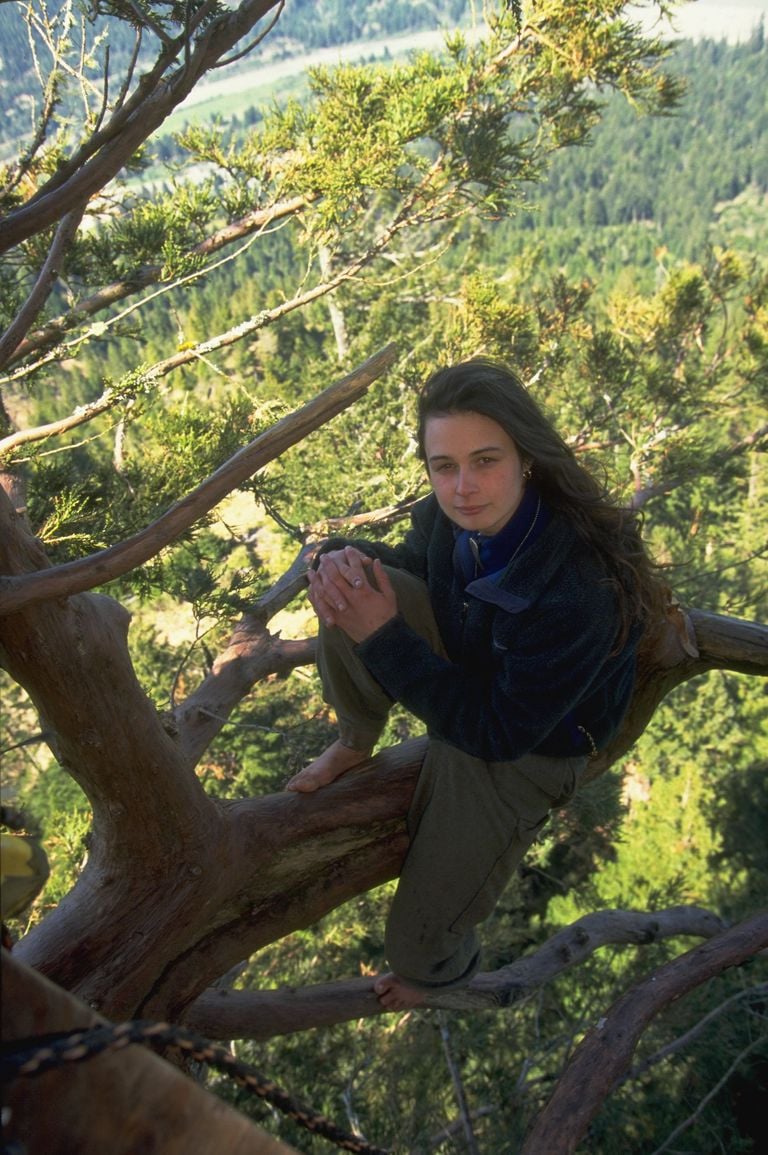
If there was one thing that made it tough to live on a treetop (aside from the danger of falling to your demise), it was going against the elements. Knowing that Julia stayed there for two years meant that she was there through different seasons.
All she had was a tarpaulin and a sleeping bag, plus a few other extra supplies. She had to sit there through storms, as well as hot, cold, wet, and dry weather. This made Julia’s resolve even more admirable.
More scare tactics

But that was just one part of the challenge. Over time, Pacific Lumber became even more frustrated because they couldn’t move forward with their plans. So they started to employ some scare tactics to get Julia to discontinue her protest.
The logging company sent people in helicopters, terrorizing Julia with their loudspeakers and floodlights. This made her life even more dangerous, and anybody could have thrown in the towel. But Julia was stronger than that, and her passion was not something that easily wavered.
Master of survival
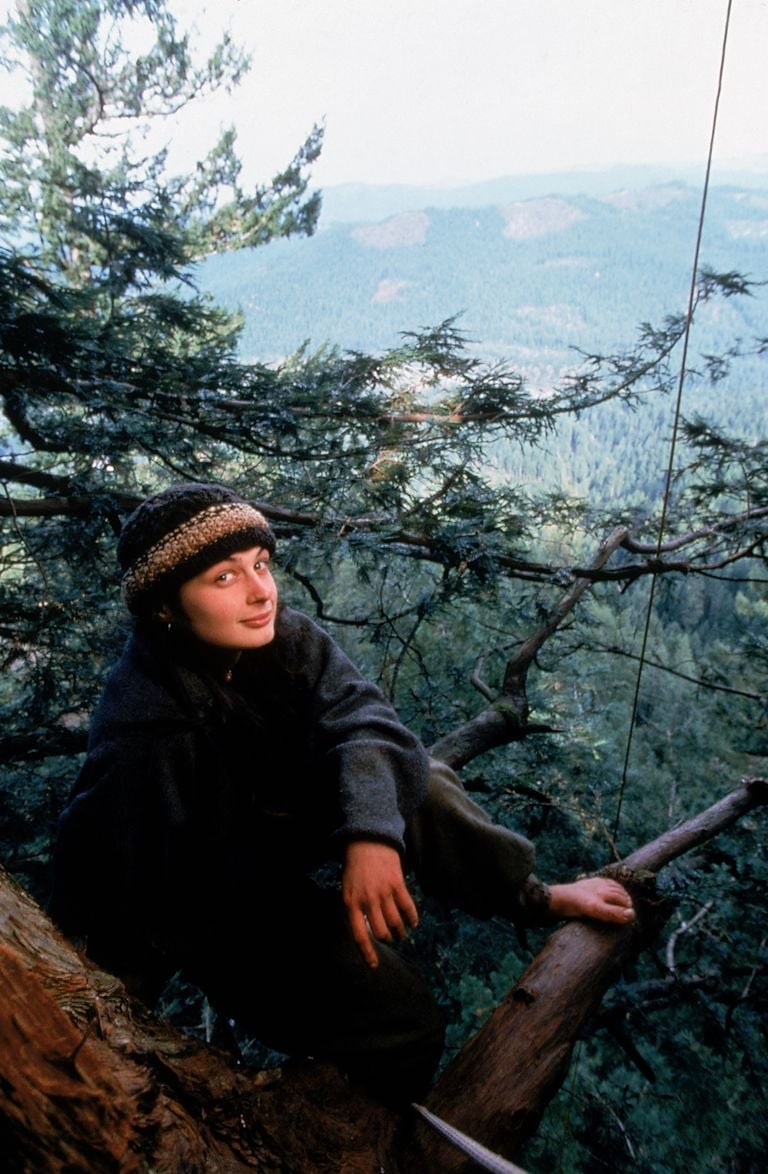
Julia stayed strong amidst the continued threats. She kept herself busy by finding more creative ways to adapt to her new lifestyle. She mastered how to survive despite the threats and challenges.
She knew that the other activists wouldn’t hold it against her if she suddenly gave up the cause and ran toward safety. But she wouldn’t have it. This cause was too important for her to give up. So she continued to strengthen herself physically and mentally and prepared for more.
An ingenious discovery

Julia was observant, so she found new ways to keep herself safe amidst the harsh environment she was in. She was constantly discovering things that could help make her more efficient as she maneuvered her way atop the trees.
One example of her ingenuity was the way she used the tree’s sap. She discovered that it made her feet stickier and less likely to slip and fall. So she decided only to wash her feet every so often so that the sap would accumulate on her soles.
Remaining unfazed

As for the taunts Pacific Lumber sent her from their noisy helicopters, Julia knew there was no other way to fight but to develop a thicker skin. So she prepared herself mentally each day so that she wouldn’t get as affected by whatever they threw at her.
Eventually, she learned how to adjust to these conditions. She had even gotten used to using a bucket instead of looking for a toilet. Meanwhile, her fight continued to gain global attention.
An amazing victory

In the end, it was a battle of wills between Julia and Pacific Lumber–a fight that Julia eventually won. Pacific Lumber finally realized they were never going to weaken Julia’s resolve.
So PL announced that they would leave Luna alone. The logging company also vowed to stop clear-cutting, especially around the area, creating a buffer zone of 200 feet around the 1000-year-old tree. This was a huge win, knowing that the zone covered hundreds of trees almost as old as Luna.
An environmental hero

December 18, 1999, marked the end of Julia’s treetop living. Two years before, activists doubted her capacity to sit on top of a tree for a week. Now, she had become a hero, especially among environmentalists.
Because of Julia’s incredible feat, she was asked to fly to New York barely two days after leaving her treetop home. She was scheduled to appear in front of the press to talk about the battle she had just won. She was an instant celebrity, something that she never thought would happen.
Effecting change

In an interview with The Washington Post, Julia said she didn’t think she would be famous for long. She thought this was just a one-time thing and the noise would eventually die down.
But Julia went on to become one of the most admired environmentalists of all time. This life-changing experience even pushed her to become a motivational speaker who helped others take action to fight for their own causes. She had truly gone a long way from being a simple girl from Jonesboro.
Luna’s future
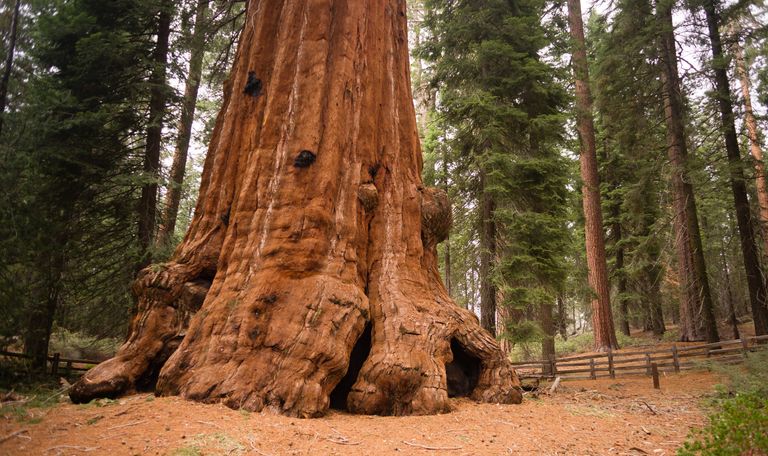
As for Luna, the majestic redwood, she continued to thrive thanks to Julia’s courage and passion. Luna was eventually adopted by a charitable trust called Sanctuary Forest, which aimed to preserve old forests throughout Northern California.
Sanctuary Forest was established 20 years before Julia’s battle against Pacific Lumber. At the time, it was a small project that aimed to protect a 2000-year-old redwood tree named Big Red. This is why it was only fitting that Sanctuary Forest also took charge of the majestic tree that Julia saved.
In the hands of vandals
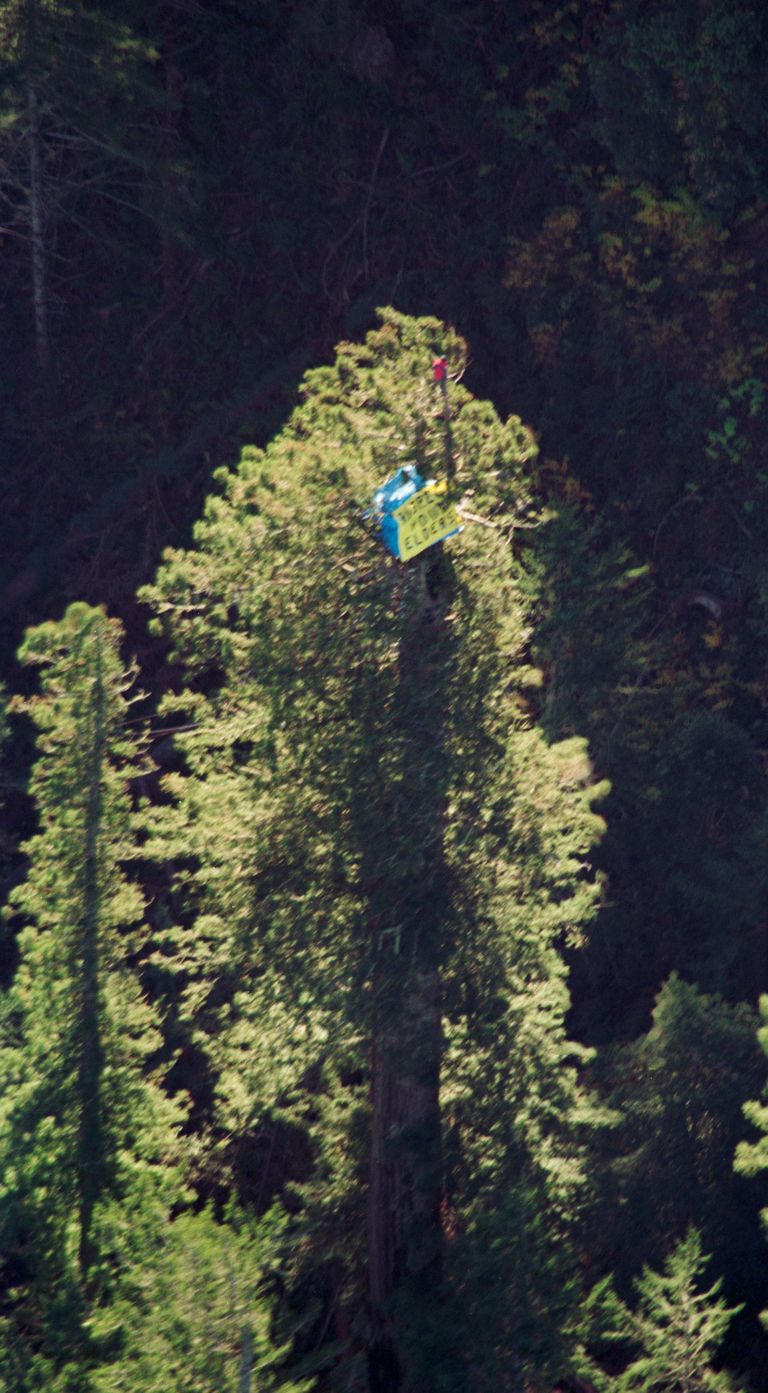
Sanctuary Forest now has over 10,000 acres of land under its guardianship. As part of their mission to protect these forests, they conduct regular inspections of the trees under their care. This allows them to monitor the trees’ health and provide necessary solutions.
In November 2020, the organization discovered that Luna had been vandalized. It horrified the environmental community, knowing how much work had been put into preserving the ancient tree. Vandals had left a huge gash in its trunk, threatening its health.
Another mission to save Luna

The people from Sanctuary Forest discovered a huge gash on Luna’s trunk measuring around three feet deep. This wound was big enough to make Luna unstable, especially when bad weather came in.
The problem was Humboldt County is known to be regularly in the path of some ferocious storms. They needed to find a way to save Luna before the next big storm came through. So a team of arborists and scientists put their heads together and find ways to save Luna.
A team effort

In a surprising turn of events, Pacific Lumber also decided to help Sanctuary Forest and the California Department of Forestry. They truly needed all the help they could get because a violent storm was discovered to be headed their way.
Within 24 hours, everyone pitching in had installed a massive wen of steel supports that served as a brace for Luna. It was a fantastic feat for the whole team, showing that nature is always a good motivator that can push anyone to take action.
Finding better solutions

Although the makeshift support was effective in keeping Luna upright, there certainly were more ways to keep the tree safe and healthy. It was a good thing there were so many professionals around the area willing to pitch in. Steve Salzman was one of those experts.
Steve is a civil engineer from Eureka, just a short distance away. He designed a series of steel reinforcement cables to help anchor Luna to the ground, giving Luna even better stability.
Luna, the survivor

Vandals continued to try and hurt Luna, but they were no longer successful. Sanctuary Forest continues to keep a close eye on it and the area surrounding the tree.
For now, the public is discouraged from visiting Luna to keep the redwood safe and healthy and to avoid disturbing the thriving biological community around it. The forest still sees new growth, which shows that all the efforts to save Luna and the redwoods around it were not in vain. Luna could be compared to Julia in a way–they are both survivors.
The next mission

Meanwhile, Julia continued to find environmental causes worth fighting for. She had found her true calling and was giving her full energy into activism. Almost three years after saving Luna, she joined an oil pipeline protest.
This time, the protest was in Quito, the capital of Ecuador. This time, they were fighting against the pipeline that the giant oil firm Occidental Petroleum had built in the middle of what used to be a lush natural environment. This fight caused Julia to land herself in jail.
A beautiful cloud forest
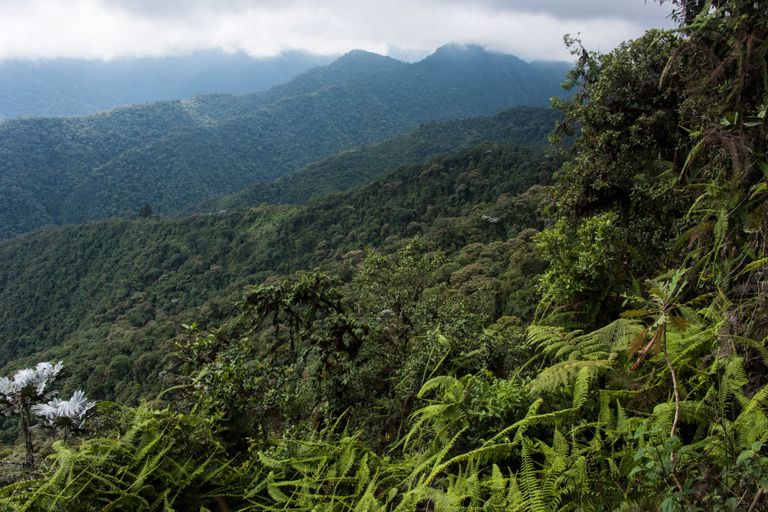
The plan to build the enormous pipeline started in the early 2000s. Occidental Petroleum wanted its pipeline to run through the heart of the Andes Mountains, where a virgin cloud forest lay.
In an interview with The Chronicle, Julia described the forest as stunning. It was home to different species of birds, insects, and other animals. The plants there were also lush and colorful, winding through the thick moss that covered most of the surface. It was indeed a magical place.
Source: The slow death of a paradise
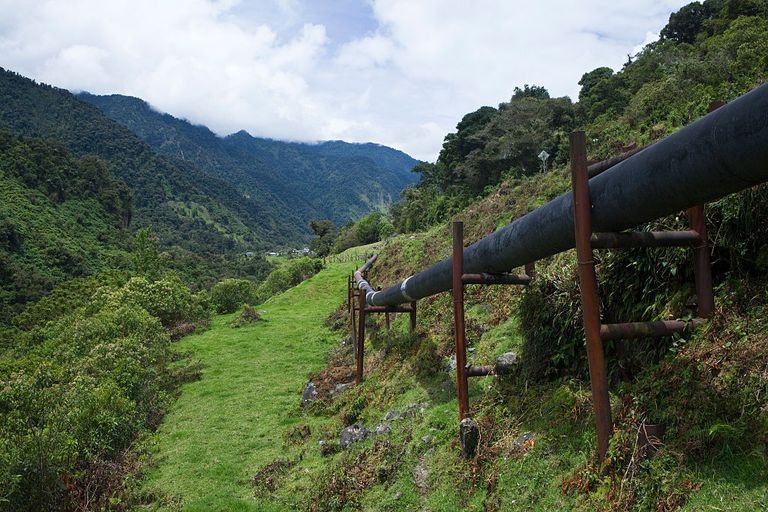
But things changed when Occidental Petroleum started building its pipeline through this place. The natural paradise started to die, and most of the color that made it look so magical started to disappear.
Of course, the huge oil company was protected by people who had immense power in the country. This meant that their protests fell on deaf ears. But it wasn’t long before the real destruction started to gain wider coverage, which meant that the people in charge also became uncomfortable with the attention.
An oil spill wreaks havoc

The pipeline started to leak, with oil spilling into the ground and the natural waterways in the area. Ecuador was home not only to thriving biodiversity but to indigenous tribes as well. The oil spills started to wreak havoc on all of them.
Ecuador’s then-president, Gustavo Noboa, called Julia crazy. She was eventually thrown out of the country. She did, however, vow to continue the fight from overseas. To this day, different groups continue to fight against the concerned parties as the pipeline continues to wreck the Amazon.
Fighting against taxes

Another fight Julia chose to be part of was against the Internal Revenue Service. Yes, the IRS.
The war in Iraq was going on back then, and Julia believed it was not the right way to use people’s taxes. So she started to participate in a practice called tax redirection, where she refused to pay taxes but donated the same amount to different environmental and social organizations. This way, she knew that her money was being put to good use and not just to expenses the government thought were more important.
Using the money the right way

In a 2005 interview, Julia said that she didn’t think she was avoiding paying her taxes. In fact, she said that she was shelling out the right amount of tax that was due–she was just putting the money into places where tax money should really be going.
Julia further emphasized that she didn’t think the IRS was using the money for the good of the people paying them. Of course, this was not the first time that people had fought against the IRS.
Continuing the fight
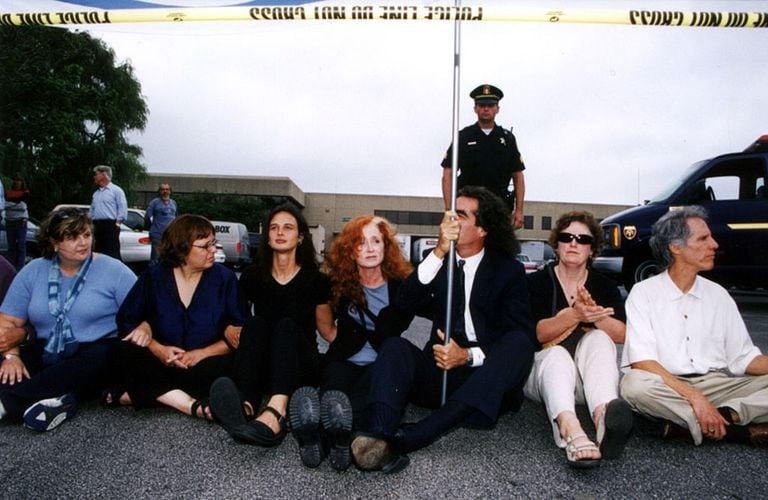
In 2004, Julia joined Activism is Patriotism. The organization fought against the stereotype that people who took direct action were terrorists. In the years that followed, she would readily take part in any cause that she believed to be worthy.
While Julia was fighting these new causes, she also kept in touch with the people fighting to protect the redwoods in California. Despite President Joe Biden signing a protection order in April 2022, there are still active attempts to remove all protection in place and allow logging companies to enter the protected area.
An inspiring hero

Because of Julia’s inspiring action for these causes, she has become a hero in many people’s eyes. Where others see her as a nuisance, people who care about the same things she fights for have written songs about her and have created documentaries inspired by her.
Even The Simpsons had an episode inspired by Julia, with Lisa Simpson staging her own protest by tree-sitting. This shows that despite opposition, she has a healthy amount of support from different sectors all over the world.
Leaving a legacy
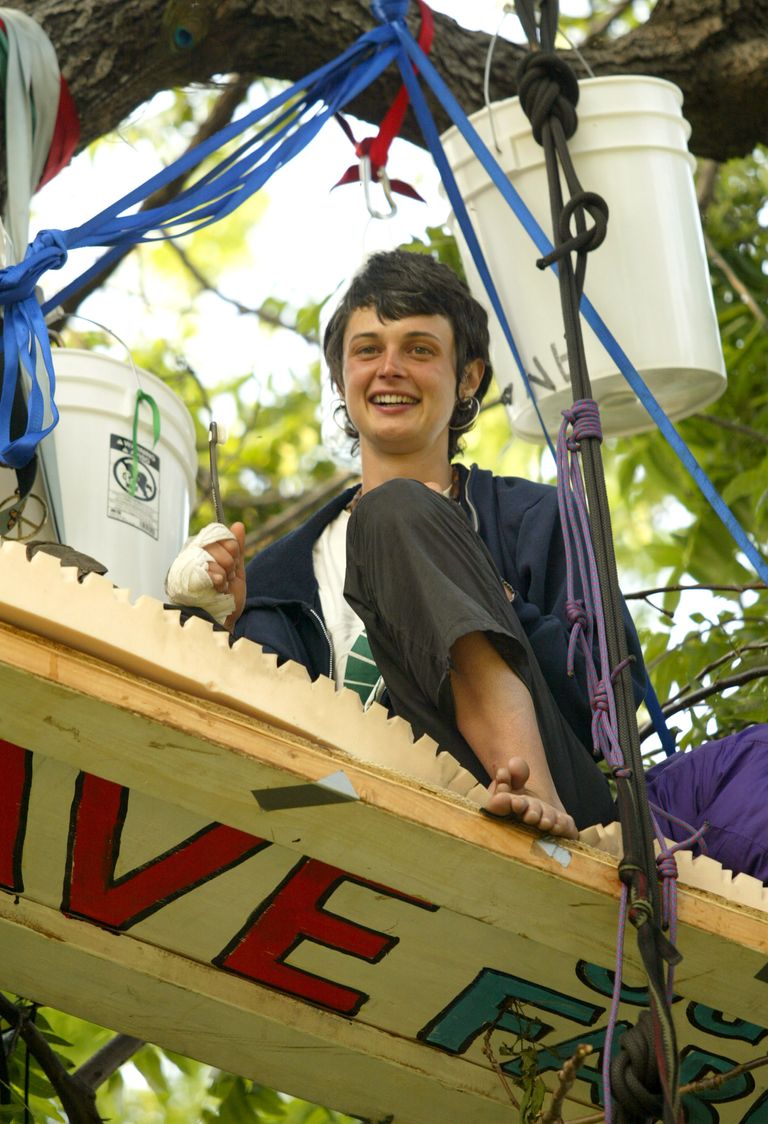
Knowing that Julia is passionate about so many things, she wishes that the time she spent fighting for Luna is not used to define her. To this day, a lot of people still see her as “that woman that lived in a tree.” But she knows that she is much more than that.
Julia prefers being known as someone who cares about the world deeply and as someone willing to take risks. She wants to be known as someone who fights to make the world a better place.
Moving forward

When asked in a 2009 interview about what was in store for her, she expressed that there were parts of her identity that she wanted to shed. It wasn’t because she didn’t like being known for the causes she fought for–it was because she wanted people to see that there was more to her beyond that.
Today, Julia maintains a blog and offers life coaching services through her website. She also sells her books through the same site and has made some of her Vegan recipes available for download.


